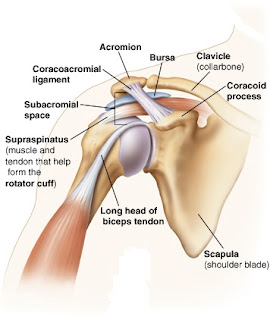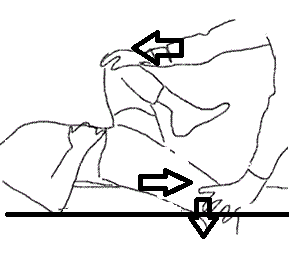World arthritis day
October 12, 2016
“He
who has health has hope, and he who has hope has everything” – Arabian proverb
Hello people!
Today is world arthritis day. Let’s make a good use of this day and
gather some knowledge about ‘arthritis’ which is going to help us in a long
run.
What is arthritis? What are the damages caused to the body because of
arthritis? How to find out if I have this condition? And how can I help myself
treat this condition? I think, here is the answer to all your question.
Arthritis is a condition affecting the joints of the body. The joint and
the joint structures undergoes degenerative changes and damage. It is one of
the most common joint diseases occurring to a wide range of population.
Arthritis is of many different types and people of any age group and gender can
be a victim of this joint disease. It can affect a single joint or sometimes
multiple joints. Arthritis can be degenerative, inflammatory, infectious or
metabolic according to the arthritis foundation.
Let’s have a quick look on what these types of arthritis actually are:
· The
degenerative arthritis:
This type of arthritis can also be called as
osteoarthritis, mainly affecting the large joints of the body.
The degenerative arthritis leads to damage to
the articular cartilage a flexible connective tissue surrounding the joint
articular surfaces, which serves as a shock absorber during stress and
activities. There is a focal loss and thinning of this cartilage. The risk of
osteoarthritis increases if you are a smoker, obese, diabetic or had some
mechanical injury or trauma. Sometimes vocational activities also makes a
person prone to this condition like a football player is more prone to knee
osteoarthritis.
· The
inflammatory arthritis:
This category includes the rheumatoid
arthritis and the psoriatic arthritis. This is an autoimmune disorder, which
means that the body unknowingly attacks its own cells causing joint erosion.
The inflammation occurs in the synovium, a soft tissue responsible for
nutrition and lubrication of the joint.
· Infectious
arthritis:
This is a rare type of arthritis occurring due
to the entry of a foreign body, particularly a microorganism, bacteria, virus
or a fungi.
· Metabolic
arthritis:
This type of arthritis includes gouty
arthritis. This condition occurs due to increased uric acid level in the body
of an individual. The increased uric acid level forms sharp crystals causing
extreme pain in the joint. Chances of having gout are more when a person is
alcoholic or obese.
The common symptoms of arthritis are joint pain, swelling, stiffness,
there is a decreased range of motion also. You may experience muscle weakness
and inability to perform day to day life activities. You might feel pain after
prolonged sitting, standing or walking. The symptoms are worse in morning in
most of the cases. In case of rheumatoid arthritis there is mild fever and in
severe conditions the small joints targeted by the disease undergo bony
deformities. There is a deposition of crystals in the joints noticed in gouty
arthritis. The target joint in gout is the big toe.
The diagnosis of the arthritis starts with observing the swelling,
redness, warmth and crepitus in the joint with a restricted range of motion.
X-ray, MRI and CT scan are advised to the patient to rule out further bony changes
like narrowing of the joint spaces and formation of spur (calcium deposition)
and cartilage changes.
To overcome arthritis, the primary aim is to reduce pain and
inflammation. The ability to perform ADLs plays a very important role. The range
of motion of the joint is to be improved. Therefore, there are a combination of
treatment strategies going hand in hand.
Full explanation to the patient about the nature of the
disease. Explaining the patient about the treatment protocol and awareness
of the risk factors, aggravating factors. The patient is advised to
avoid the climbing of stairs, prolonged sitting, and prolonged walking.
The patient should begin with the active movements of the
joints to maintain range of motion,
Strengthening of the
muscles with the help of resistance is carried out,
Resistance can be in the
form of weight cuffs, dumbbells, therabands.
-Closed chain exercises:
squatting, planks, lunges.
-Quadriceps table
-Cycling (static and
dynamic)
-Isometric exercises
Medications to reduce pain
and inflammation can be:
-Analgesics used to
suppress pain.
-Initial trial of
pracetamol.
-NSAIDs
-Steroids
The
patient is advised to reduce adverse mechanical factors like:
-wearing shock absorbing footwear.
-weight reduction.
-use of walking sticks.
-avoiding stress and strain.
· SURGERY:
-osteotomy: brings relief in symptoms.
-joint replacement: for cases crippled
with advanced damage.
-joint debridement: the affected joint
is opened and the cartilage is smoothened, the osteophytes and the
hypertrophied synovium is excised.
-arthroscopy: removal of loose bodies,
meniscal tears.
Share this information with your family, peer group, colleagues
about arthritis and know if anyone is at a verge of suffering from this
condition. Check out if anyone in your family, parents or grandparents are already
having arthritis and help them find a solution.
Take care,
Jasrah.





Comments